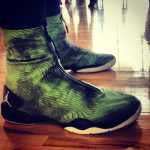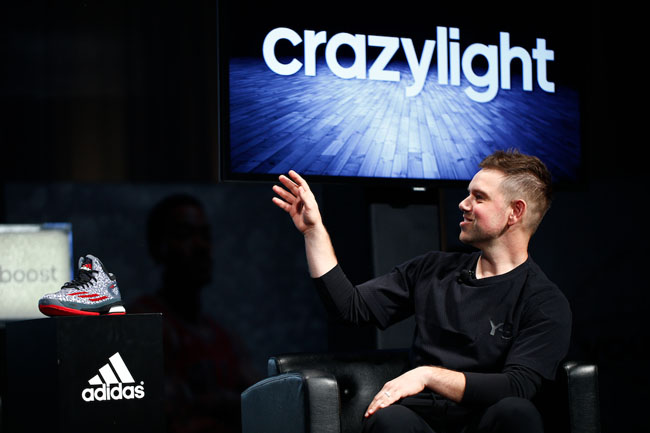
words and interview // Zac Dubasik
images // Victor Sun, Liz Barclay, and courtesy of adidas
The 2011 introduction of the Crazy Light changed the weight game in performance hoops shoes. But since then, its design has evolved slowly, rather than making and drastic jumps.
However, with the introduction of Boost to basketball, it gave the team at adidas, led by Advanced Footwear Category Design Director Robbie Fuller, an opportunity to shake things up. The new Crazy Light Boost may be the heaviest shoe yet in the line, but they also feel it’s the best. We had the chance to go in-depth on the shoe with Fuller, following its introduction yesterday. Check out our interview below to find out even more about the upcoming fourth entry into the Crazy Light line.
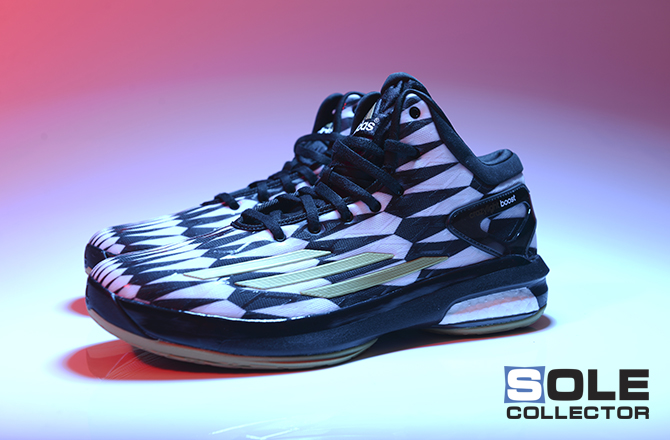
If I was looking at a lineup of all the past Crazy Lights, I see what’s happening from one, to two, to three. And then you get to the newest one, and everything is different. Why the big jump, instead of the small change, this time?
Being on the shoe, and working on the shoe so closely, even for me, I wanted to freshen it up. And having Boost be that new big ‘plus-1’ to the franchise, I thought was worthy of making that big jump.
You see that on signature shoes. There’s a consistency, and then all of the sudden some new information comes in that makes the whole thing change. And that’s what happened with Boost. I couldn’t make the same shoe over again, because it needs different things. It needs to have the plate on the bottom, not on the top. It needs to have a Techfit stretch bootie so that you have that same experience like the running shoes. I like to think of the first three as being built off very similar research, but then this one had that x-factor that made it have to go somewhere else.
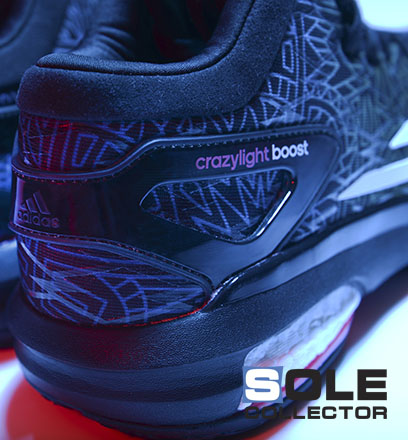 Construction-wise, the SPRINTFRAME, and stitching the upper directly to the frame, was a big part of the Crazy Light. Is that still a part of the new model?
Construction-wise, the SPRINTFRAME, and stitching the upper directly to the frame, was a big part of the Crazy Light. Is that still a part of the new model?
No, based on the testing we’d done in running, and some of the ones we’d done in basketball, what we saw was the plate needing to move away from the top, and move to the bottom. You still end up getting an external support and an internal [points to the heel counter] – kind of a dual layer of support, that works well. But, because you stand directly on to the Boost, we couldn’t have plates on the top. And so, now, what you get, when you move it to the bottom, it maximizes the Boost in the heel, and channels that to the front, and it literally jumps!
What has changed with the Boost itself from what we’ve seen in running?
The quick answer would be ‘nothing.’ It’s the same Boost, the same formula, the same experience. That’s actually something we had as one of our challenges. We didn’t want you to have a pair of Pure Boosts on, or Energy Boosts, and then put the basketball one on, and feel like somebody made a compromise somewhere. From the beginning, that was critical, that every time you had the same experience, because with Boost, every time, you have the same experience. [laughs] It’s endless energy.
We built multiple versions, and this is the setup that worked the best for the light weight. Boost, for all the things that it does well – the energy and elasticity – it weights a little bit more than normal foams, so we obviously had to offset that with cutting out some of the rubber, minimizing the web, and maximizing one smooth layer of comfort all the way around the shoe.
Could you explain more about the upper construction?
We took inspiration from the running shoes, because that whole system worked very well. It’s a four-way stretch Techfit bootie on the inside, for that nice comfort. And then we took and engineered a new spacer mesh, so it’s a complete air-mesh wrapping all the way around, but it’s more durable than any one we’ve ever made before, and that builds out the two main layers. I love how we’ve been doing with the ZX Flux, and the Battle Pack – that was strategic – we wanted to have this be able to be upgraded and personalized without having to mess with any of the performance features.
What was the final weight you arrived at?
11.6, with one sockliner.
 And would you say that the inclusion of Boost is one of the reasons that it is heavier than they’ve been in the past?
And would you say that the inclusion of Boost is one of the reasons that it is heavier than they’ve been in the past?
In the past, the goal was ‘light,’ and we maximized for light. And with this one, based on the conversations we’d had with people in the Crazy Quick 1, which was right in the 11-12oz range, it was consistent: ‘these are so light!’ So we knew [we’d be good] if we were in the 11.5, 11.6 range. And this is just a little caveat: that is the true weight. It doesn’t leave the factory unless it’s 11.6. There are other shoes where maybe it doesn’t match the weight it gets claimed at, but we were really strict about that.
And a good transition can make a shoe feel even lighter too.
Yeah, and the enegy makes it feel light every single time. And as the game changes, we have to change with the game and the way these guys play. They needed this ‘plus-1.’
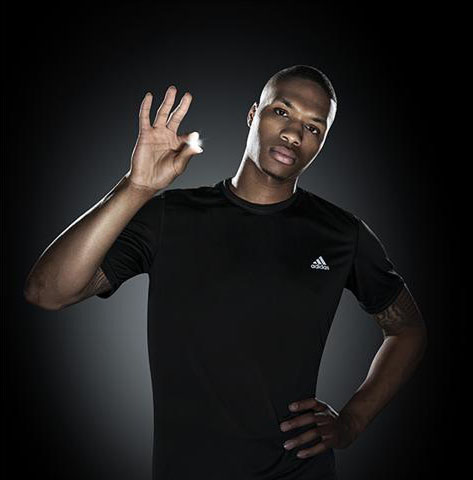 Was the cut of the shoe also a response to the changes in the game?
Was the cut of the shoe also a response to the changes in the game?
You might call that one a happy accident. [laughs] There are two reasons. Number one, now the branding isn’t there, because it’s been moved to the front, so I had the chance to do something different with the collar. And second, I know through conversations with Dame (Lillard), that he actually likes a little more of a low, to a mid, and not so much the high tops. It just happened to work out really well that it works both with his preferences, and was an opportunity to cut some weight, and allow the shoe to have a little bit more mobility.
We can see the Boost a little bit in the heel. Does it extend further than what we can see though?
It actually extends backwards a little bit, and forwards a little bit, in this iteration. When you see the D Rose 5, from the outside – the shelf view – it might look only like it’s half, but if you look at the inside of the shoe, you’ll notice that it goes all the way to the toe.
Boost is interesting, because it’s kind of a visible technology, but it’s subtle, and doesn’t dominate the design.
I think that, one, based on the testing we have now, Boost works really well when it’s exposed. So that’s why it’s exposed on these two, because it needs to go somewhere as it stretches out. I like that we can play it up or play it down. I love that it’s white; I’m glad that it’s not a lot of color right now, because it’s different. The market is full of colored midsoles. It naturally is like this; the pellets are clear, and when you steam it, it turns white. I like that it gives us a chance to have an amazing platform, full of energy, but at the same time, it can also play down, so that the upper can play up. And in the future, we can do loads more stuff with upper designs that take inspiration from guys like Dame, and Kanye and Pharrell, and Rose.
